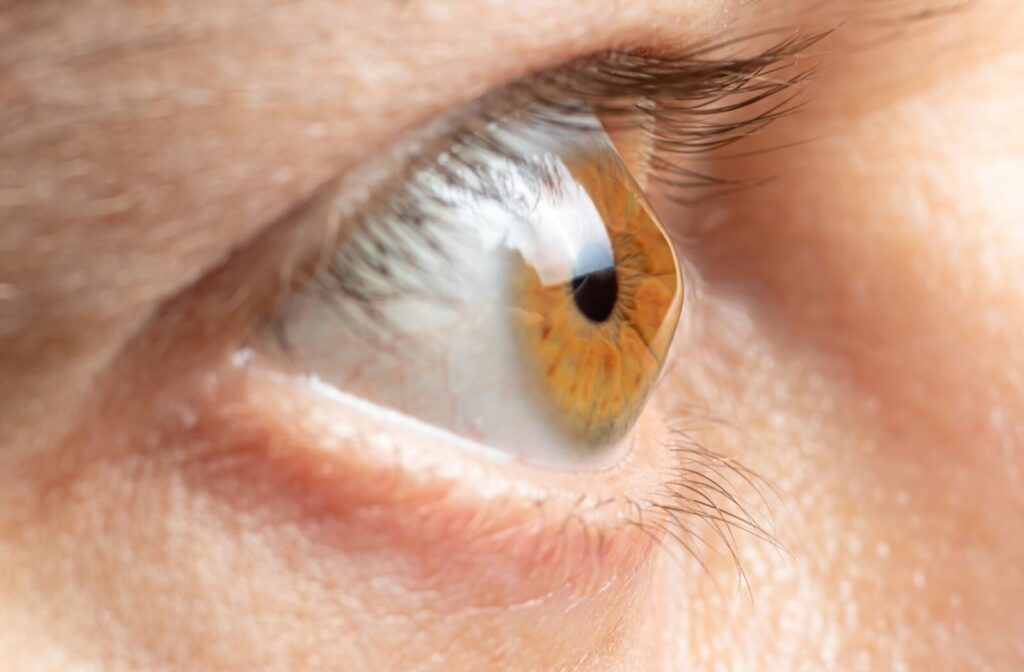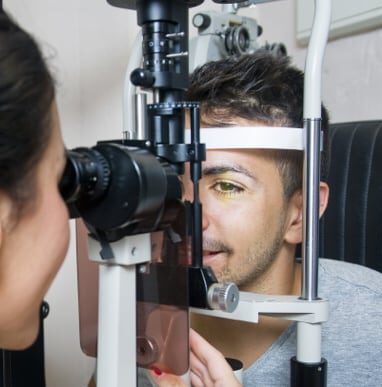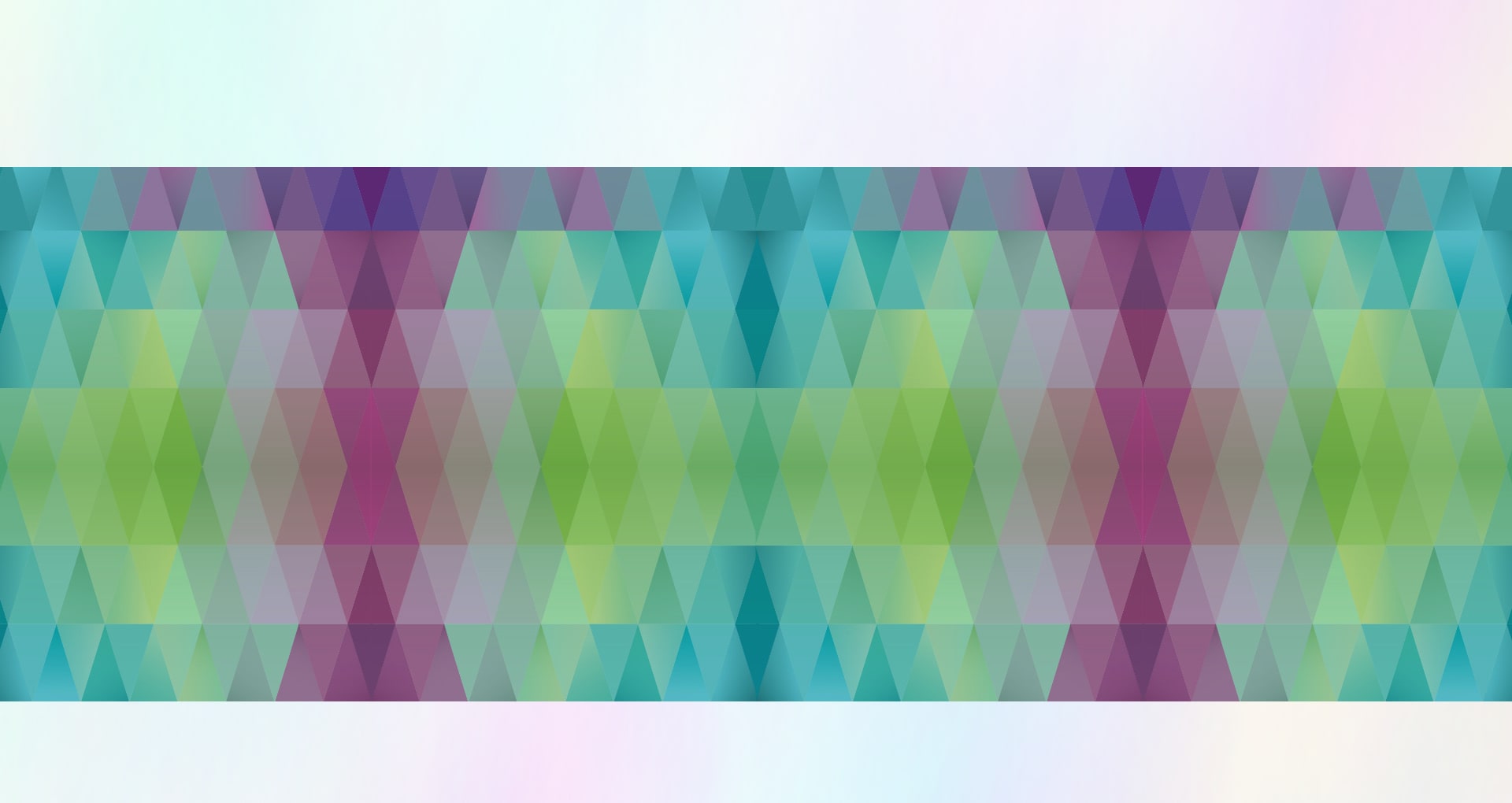Changes in your vision, such as blurriness, light sensitivity, or difficulty seeing at night, can sometimes point to more than just a change in your prescription. One possible cause is keratoconus, a progressive condition that affects the cornea, causing it to thin and bulge into a cone shape.
This irregular shape distorts vision and, if left untreated, can lead to serious visual challenges. While keratoconus cannot be cured, it can be treated with options that help stabilize the cornea and improve vision. Early diagnosis is key.
A comprehensive eye exam can help detect keratoconus in its early stages, when treatment options are available to slow its progression and support long-term vision health.
What Is Keratoconus?
Keratoconus is a progressive eye condition that affects the cornea, the clear, dome-shaped surface at the front of your eye responsible for focusing light. In a healthy eye, the cornea maintains a smooth, round shape that helps light enter correctly.
But with keratoconus, the cornea gradually becomes thinner and bulges outward into a cone shape, distorting vision. This condition often begins in adolescence or early adulthood and tends to get worse over time. It can lead to frequent changes in your prescription for glasses or contact lenses.
What Causes Keratoconus?
The exact cause of keratoconus isn’t fully understood, but there are a few known risk factors:
- Family history: Genetics can play a role.
- Chronic eye rubbing: Linked to increased corneal weakness.
- Eye allergies or irritation: Conditions like hay fever may contribute.
- Systemic conditions: Syndromes such as Down syndrome and Ehlers-Danlos have been associated with keratoconus.
Reducing eye irritation and avoiding behaviors like rubbing your eyes may help limit the risk of progression.
Recognizing the Symptoms

Keratoconus symptoms can develop slowly. Common signs can include:
- Blurry or distorted vision
- Light sensitivity or glare
- Difficulty seeing at night
- Frequent prescription updates
- Eye strain or discomfort
If you notice these changes, especially in your teens or twenties, it’s worth bringing them up during your next comprehensive eye exam.
How Keratoconus Progresses
Keratoconus can range from mild to more severe forms, and its impact on your vision will likely evolve over time.
- Mild: Vision changes may still be manageable with corrective lenses, such as glasses or soft contact lenses.
- Moderate: The cornea becomes increasingly irregular, and vision may require specialty lenses, such as rigid gas-permeable (RGP) or scleral lenses.
- More advanced: Thinning and possible corneal scarring can make vision correction more complex.
- Severe cases: If the corneal structure weakens too much, a corneal transplant may be necessary to restore vision.
Can Keratoconus Be Cured?
While keratoconus cannot be cured, it can be effectively treated. Early diagnosis and appropriate care can help slow the progression and support long-term vision health.
Non-surgical treatments, such as glasses, rigid gas-permeable lenses, or scleral lenses, are often effective in the early stages. At the same time, corneal cross-linking can help stabilize the cornea and prevent further thinning.
In more advanced cases, procedures such as Intacs or corneal transplants may be recommended. Ongoing management plays a crucial role in maintaining a comfortable and functional vision, as well as reducing the risk of long-term complications.
Non-Surgical Treatment Options
- Glasses and soft contact lenses: Often helpful in the early stages.
- Rigid gas-permeable (RGP) lenses: Help correct vision by smoothing the eye’s refractive surface.
- Scleral lenses: Larger lenses that vault over the cornea, often used in moderate to severe cases.
- Corneal cross-linking (CXL): A minimally invasive treatment that strengthens the cornea to reduce further thinning.
Surgical Options
- Intacs (corneal inserts): Small devices placed in the cornea to improve its shape
- Corneal transplant: Considered in cases where the cornea becomes too thin or scarred for other treatments
What If It Goes Untreated?
Without appropriate care, keratoconus can result in significant visual complications, including:
- Difficulty performing daily tasks due to poor vision
- Corneal scarring that limits clarity
- Risk of corneal hydrops, a painful swelling due to fluid buildup in the cornea
Managing keratoconus early may help reduce the risk of complications and support long-term visual function.
Tips for Managing Keratoconus
While keratoconus can’t be reversed, there are steps you can take to support your eye health:
- Avoid rubbing your eyes, which may worsen corneal damage
- Wear sunglasses with UV protection to support corneal health
- Follow your doctor’s treatment recommendations, including lens wear or cross-linking procedures
- Manage allergies to reduce eye irritation
Protecting Your Vision
Keratoconus can lead to serious vision impairment if not managed correctly, but with proper care, most people can maintain clear, functional vision. Treatment options such as specialty contact lenses, corneal cross-linking, or surgery may help stabilize vision and reduce the risk of long-term complications.
If you’ve noticed common signs like blurred vision or frequent prescription changes, don’t wait to take the next step. You can book a comprehensive eye exam at one of our two Vision Care Center locations in Washington or Peoria. It’s a simple step that can help protect your vision and catch potential complications early.












